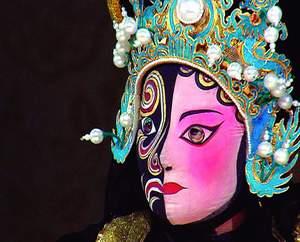Face-changing
Face changing (变脸) is a unique stunt incorporated in Sichuan Opera that is used to express the changing emotions of characters.
China has an abundance of 1,300 local operas. Sichuan opera is one of the oldest local operas and is popular in Sichuan province and some regions of Yunnan and Guizhou provinces.
It is the most significant and most interesting opera form from Southwestern China. As a stage entertainment,it conveys the idea of time and space to the audience through performances.
The opera is characterized by its unique solo singing, refined acting, rich percussion and irresistibly funny come-dians. Sichuan opera also displays its unique skills: the changing faces, spitting fire, and rolling light.
Numerous Sichuan opera troupes are active throughout the province, both in the countryside and in the cities.The troupes in Chengdu are rate artistically top level.
The face changing, or "bianlian" in Chinese,is an important intangible cultural heritage in China. Only a few masters have grasped this skill. They know how to change Sichuan opera masks in magically quick succession. As they flourish their arms and twist their heads, their painted masks change again and again and again.
Face changing got its start 300 years ago. At the beginning opera masters changed the color of their face during performances by blowing into a bowl of red,black or gold powder. The powder would adhere to their oiled skin quickly. In another method ,actors would smear their faces with colored paste concealed in the palms of their hands.
By the 1920`s,opera masters began using layers of masks made of oiled paper or dried pig bladder. the masters could peel one after another in the blink of an eye. At present the masters use the full face,painted silk mask. they can be worn in layers, as much as two-dozen thick,and be pulled off one by one.
